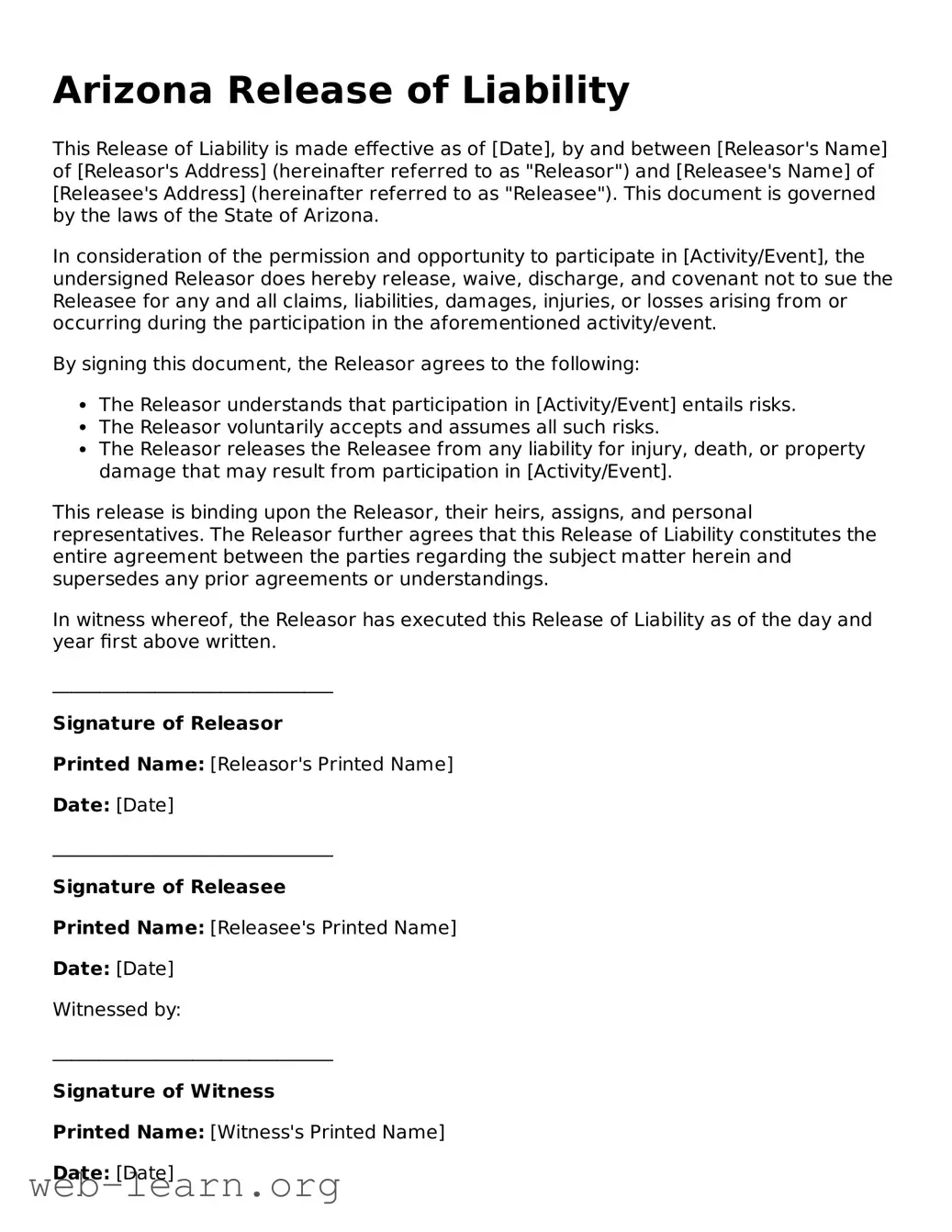Arizona Release of Liability
This Release of Liability is made effective as of [Date], by and between [Releasor's Name] of [Releasor's Address] (hereinafter referred to as "Releasor") and [Releasee's Name] of [Releasee's Address] (hereinafter referred to as "Releasee"). This document is governed by the laws of the State of Arizona.
In consideration of the permission and opportunity to participate in [Activity/Event], the undersigned Releasor does hereby release, waive, discharge, and covenant not to sue the Releasee for any and all claims, liabilities, damages, injuries, or losses arising from or occurring during the participation in the aforementioned activity/event.
By signing this document, the Releasor agrees to the following:
- The Releasor understands that participation in [Activity/Event] entails risks.
- The Releasor voluntarily accepts and assumes all such risks.
- The Releasor releases the Releasee from any liability for injury, death, or property damage that may result from participation in [Activity/Event].
This release is binding upon the Releasor, their heirs, assigns, and personal representatives. The Releasor further agrees that this Release of Liability constitutes the entire agreement between the parties regarding the subject matter herein and supersedes any prior agreements or understandings.
In witness whereof, the Releasor has executed this Release of Liability as of the day and year first above written.
______________________________
Signature of Releasor
Printed Name: [Releasor's Printed Name]
Date: [Date]
______________________________
Signature of Releasee
Printed Name: [Releasee's Printed Name]
Date: [Date]
Witnessed by:
______________________________
Signature of Witness
Printed Name: [Witness's Printed Name]
Date: [Date]
